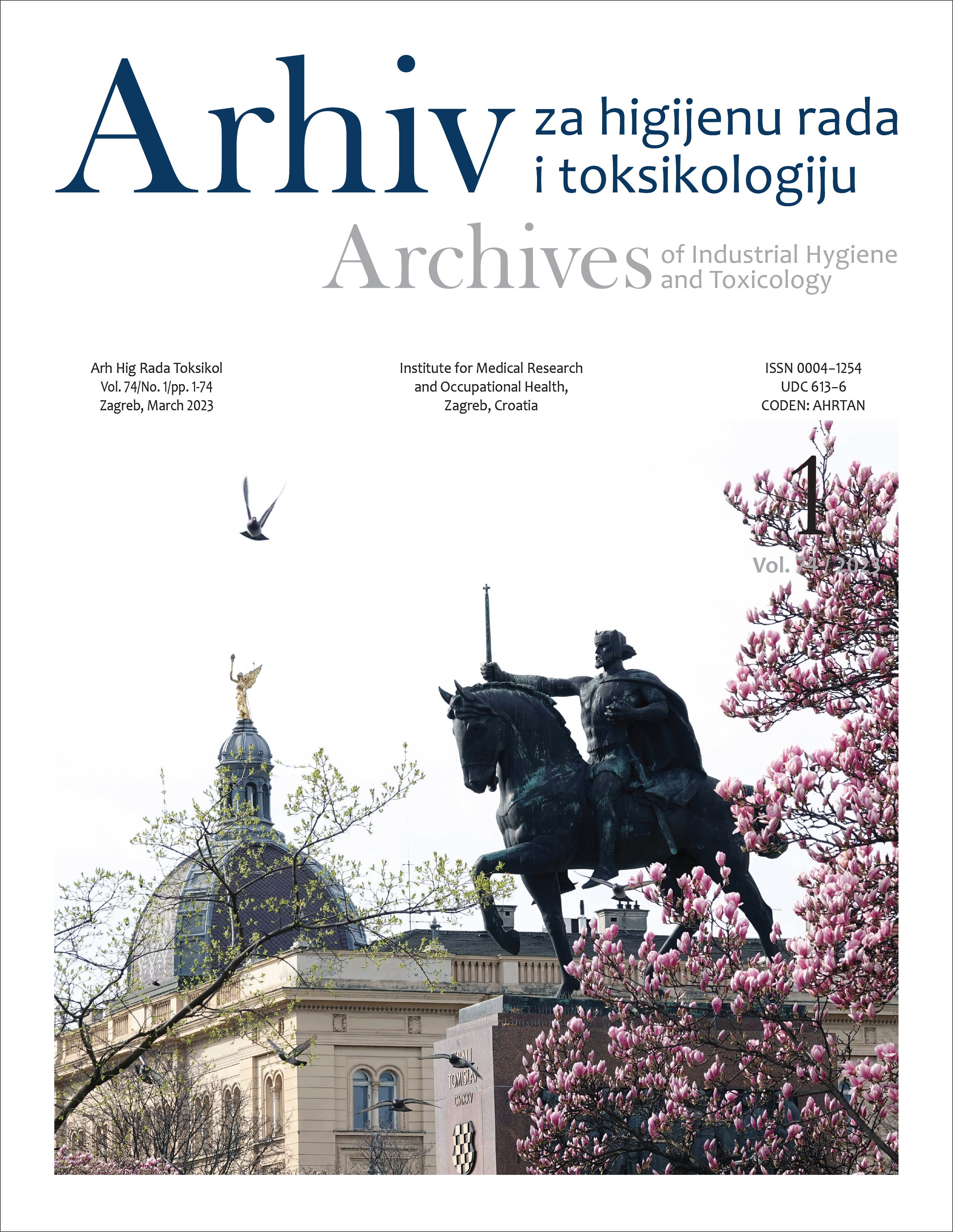How different microfilters affect the recovery of eleven EU-regulated mycotoxins
DOI:
https://doi.org/10.2478/aiht-2023-74-3693Keywords:
filter-analyte interaction, liquid chromatography-tandem mass spectrometry, underestimation, sample preparationAbstract
Microfiltration is a common step in liquid chromatography – tandem mass spectrometry (LC-MS), a method of choice in determining several mycotoxins in a solution at once. However, microfiltration may entail filter-analyte interactions that can affect the accuracy of the procedure, and underestimate exposure. The aim of our study was to assess how five different membrane materials for syringe filters (nylon, polytetrafluoroethylene, polyethersulphone, mixed cellulose ester, and cellulose acetate) affect microfiltration and recovery of EU-regulated mycotoxins, including aflatoxins B1, B2, G1, and G2, deoxynivalenol, fumonisins B1 and B2, zearalenone, T-2 and HT-2 toxins, and ochratoxin A. Polytetrafluoroethylene filters turned out to least affect microfiltration through mycotoxin loss, followed by more commonly used nylon filters, whereas the remaining three filter membrane materials had such a negative effect on recoveries that we found them incompatible with the procedure. Our findings clearly suggest that it is important to select a proper filter type that suits analyte properties and solution composition and to discard the first few filtrate drops to ensure the accuracy of the analytical procedure.












